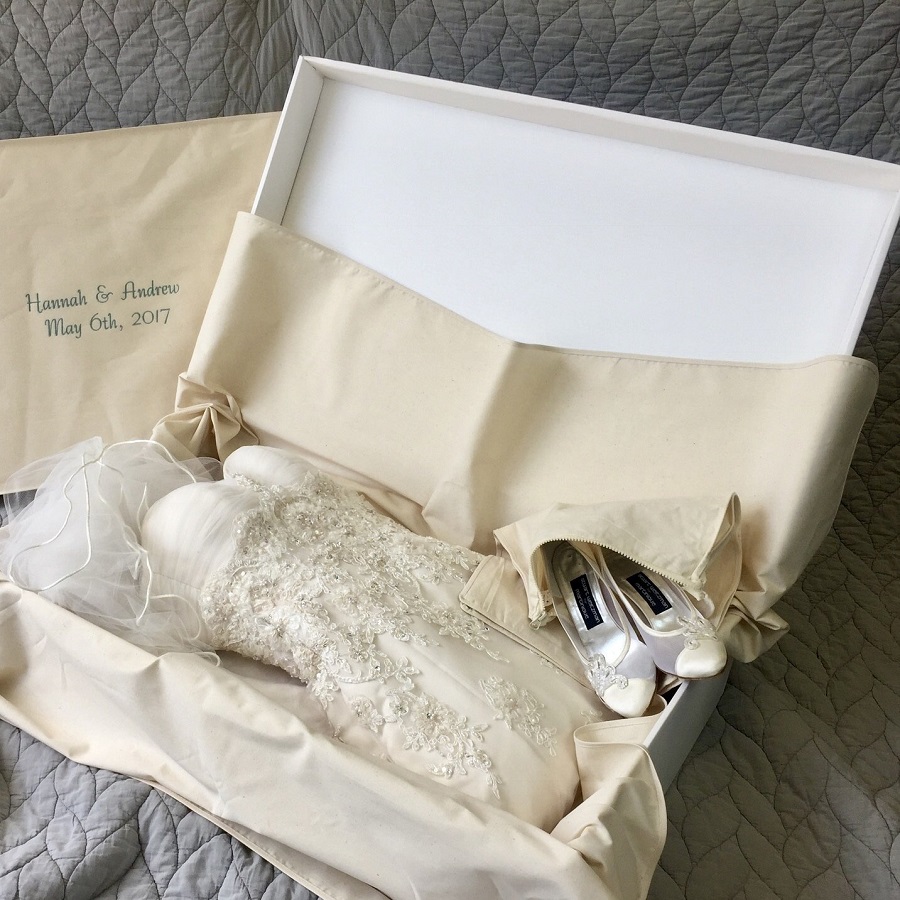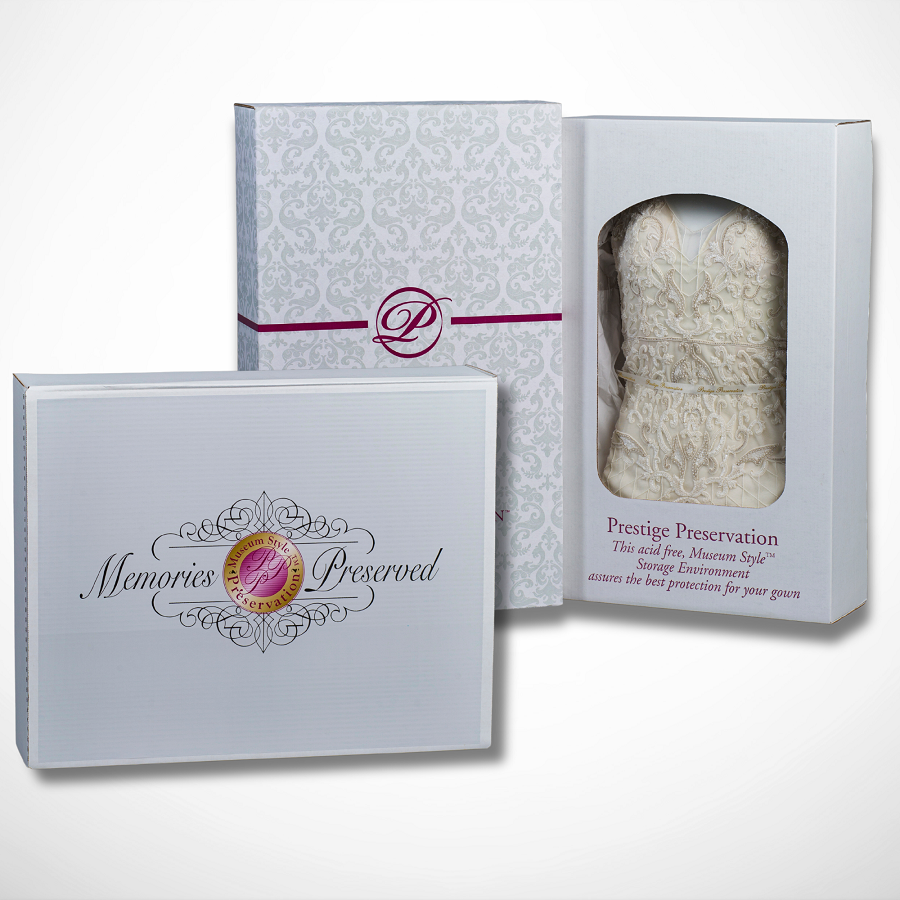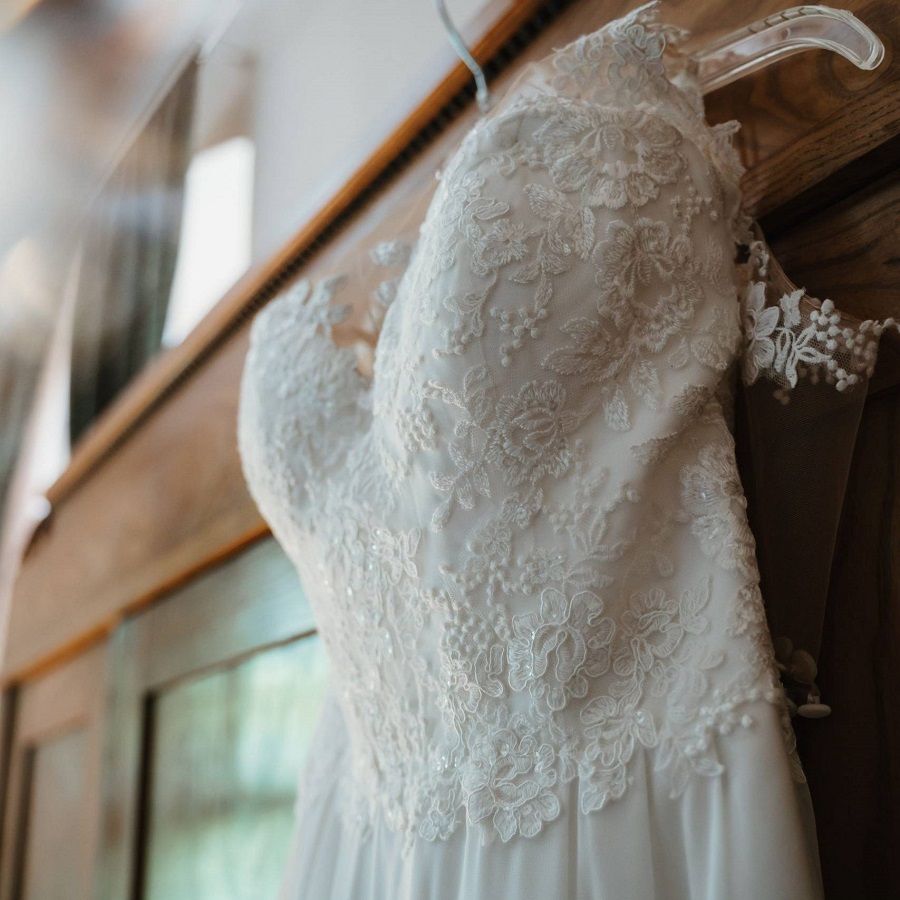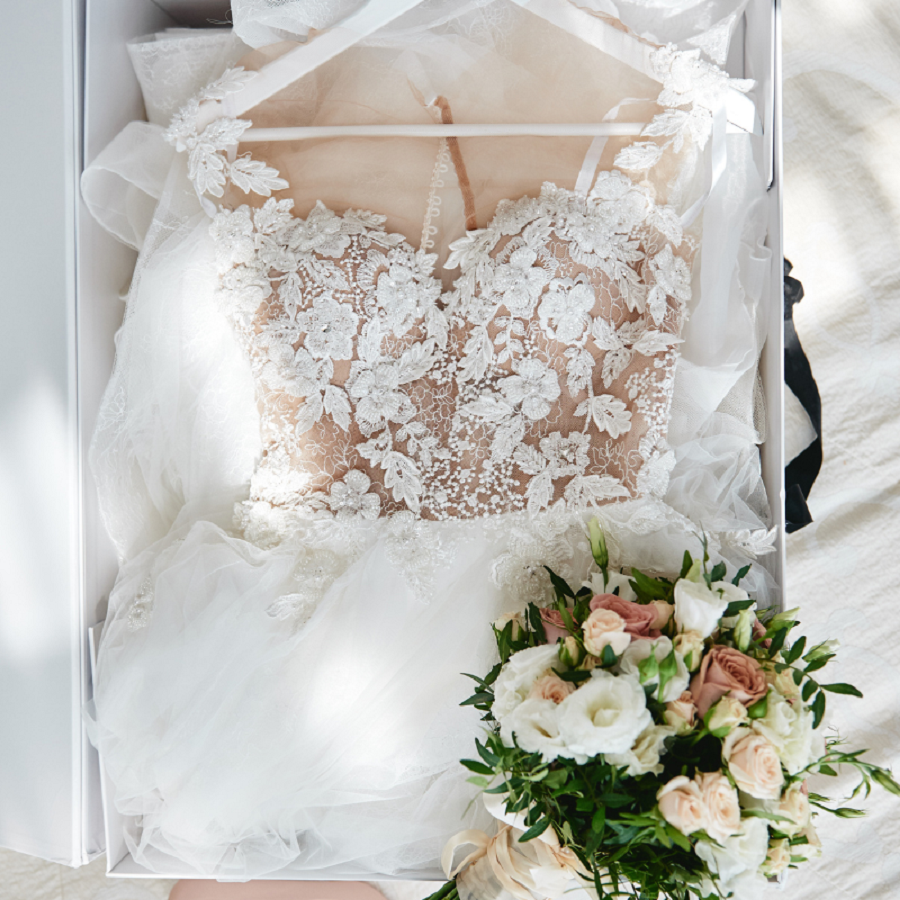Introduction
Preserve wedding dress – Your wedding day is one of the most significant milestones in your life, a moment filled with love, laughter, and cherished memories. As you celebrate this special occasion, your wedding dress serves as a beautiful symbol of your love story. To ensure that this precious garment remains a timeless keepsake, proper preservation is essential. In this ultimate guide to wedding dress preservation, we’ll explore the steps, techniques, and best practices to keep your dress in pristine condition for years to come.
The Importance of Wedding Dress Preservation
After the festivities have ended, your wedding dress may show signs of wear, tear, or stains from makeup, food, or beverages. Preserving your wedding dress not only protects its beauty but also helps maintain its sentimental value. Here’s why preservation is crucial:
- Emotional Value: Your dress is a tangible reminder of your special day. Preserving it allows you to revisit those memories in the years to come.
- Potential for Future Use: Whether you envision passing the dress down to a daughter or repurposing it for a special occasion, preservation keeps options open.
- Investment Protection: Many wedding dresses are significant financial investments. Proper care helps protect that investment against deterioration.
Understanding the Preservation Process
Wedding dress preservation involves various steps to clean, store, and protect the fabric. Here’s how to go about it:
1. Immediate Care After the Wedding
Don’t Delay: The first step in preserving your wedding dress is prompt action. Attempting to clean your gown yourself can lead to irreversible damage, especially if stains are involved.
Initial Cleaning: If you notice any stains, gently blot them with a clean, damp cloth. Avoid rubbing as this can spread the stain. Keep the dress in a cool, dry place until you’re ready for professional cleaning.
2. Professional Cleaning
Since wedding gowns are typically made from delicate fabrics—silk, tulle, lace—professional cleaning is highly recommended. Look for a cleaner who specializes in wedding dresses. They usually have the expertise and equipment to handle the fabric gently.
Post-Wedding Consultation: A professional cleaner will assess your dress for stains or damage. They will discuss the cleaning methods, costs, and expected outcomes.
Cleaning Options
Depending on the fabric and embellishments, here are some common cleaning methods:
- Wet Cleaning: Best for delicate fabrics free from synthetic fibers, using water and eco-friendly detergents.
- Dry Cleaning: This method is suitable for heavily embellished dresses. It uses chemicals to remove stains without soaking the fabric.
3. Preservation Techniques
After cleaning, the next phase is preservation. Here are the most common methods:
Acid-Free Storage: Store your dress in an acid-free box to prevent yellowing and fabric deterioration. Avoid using plastic unless specifically designed for garment storage; plastic can trap moisture and lead to mildew.
Humidity Control: Store your dress in a climate-controlled environment. High humidity can damage fabrics, especially natural fibers.
Use of Fabric Layers: Place acid-free tissue paper between layers of the dress. This helps maintain the shape and prevents creasing.
4. Proper Storage
Your wedding dress deserves a home that protects it from the elements. Consider the following tips for storage:
- Flat vs. Hanging: While hanging may seem convenient, it can stretch out the fabric and distort its shape. For long-term storage, a flat position in a box is often preferred.
- Avoid Light Exposure: Direct sunlight can fade your dress over time. Store it in a dark or dimly lit space and avoid attic or basement locations prone to temperature spikes.
- Regular Checks: Check your dress periodically for any signs of discoloration or damage. This is particularly important if you’ve stored it for several years.
DIY Preservation Tips
If professional preservation is beyond your budget, there are some DIY methods you can employ. However, these should be approached with caution, as improper methods can cause irreversible damage.
- Gentle Cleaning: Use a gentle, pH-neutral detergent to lightly hand wash your gown if you feel confident. This should only be done for simple fabrics and if the dress is free of complex embellishments.
- Safe Storage Materials: If you’re boxing the dress yourself, invest in acid-free materials and a sturdy box. Do not use cardboard boxes unless they are specially made for preservation.
- Breathable Fabrics: Consider wrapping the dress in a muslin cloth before placing it in a box. Muslin is breathable and helps to prevent moisture buildup.
A Special Note on Heirloom Dresses
If your wedding dress has a unique history or is a family heirloom, it may require additional care. Consult a conservator specializing in historical textiles for tailored advice.
- Limited Handling: Minimize handling to reduce wear. If there are specific issues—as in the case of vintage fabrics—professional advice is invaluable.
- Documentation: Keep a record of any repairs or restoration work, which can help maintain the dress’s heritage and value.

Understanding the Importance of Preservation
- Sentimental Value: Your wedding dress holds emotional significance. It encapsulates a day filled with love, laughter, and joy. Preserving it allows you to cherish these memories for years to come.
- Financial Investment: Wedding dresses can be expensive, sometimes costing thousands of dollars. Proper preservation ensures that your investment doesn’t go to waste due to wear, tear, or damage over time.
- Legacy: Many brides aspire to pass down their wedding dress to their daughters or other family members. Preservation makes this possible, allowing future generations to experience the fabric of your love story.
After the Wedding: Immediate Steps to Take
After the last dance and the bouquet toss, your dress requires immediate attention for optimal preservation.
1. Avoid Cleaning Immediately
If your wedding dress is stained or has marks, resist the urge to attempt cleaning it yourself. Here are some do’s and don’ts:
- Do: Inform your wedding planner or store where you purchased your dress about any stains.
- Don’t: Use home cleaning products, as they may damage the fabric or exacerbate the stains.
2. Keep It Safe and Secure
Until you can take it to a professional:
- Hang it Up: If possible, hang your gown in a cool, dry place away from direct sunlight. Avoid using wire hangers; instead, opt for a padded hanger that can support the weight of the fabric.
- Cover with a Clean Sheet: Use a plain cotton sheet or a breathable garment bag to protect the dress from dust and exposure.

Conclusion
By following the steps outlined in this ultimate guide to wedding dress preservation, you can ensure that your beautiful gown remains a cherished keepsake for years to come. Whether you choose to preserve it for future generations, as a tangible memory of your special day, or repurpose its fabric, a well-preserved wedding dress tells a story—your story.
Given the emotional and financial investment, taking the time to carefully preserve your dress will bring you peace of mind that it will endure the test of time. Let the memories of your wedding day live on, beautifully captured in the delicate folds of your gown. Enjoy the process of preserving not just fabric, but the essence of love that your wedding dress represents.
